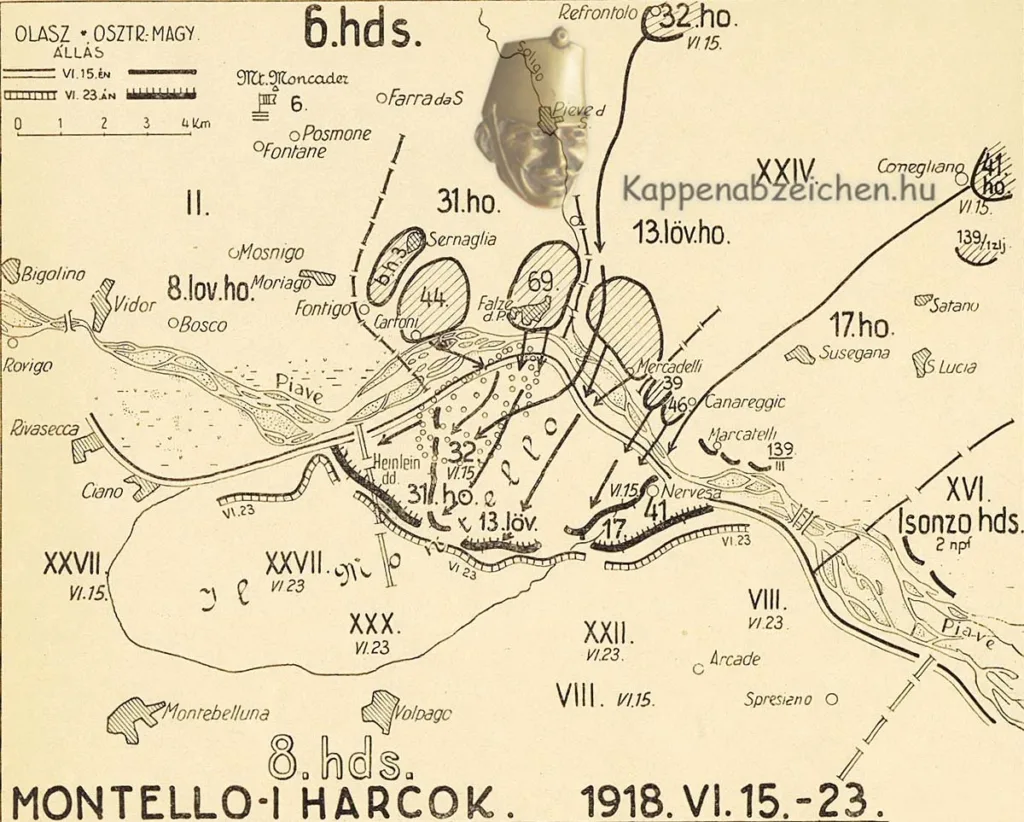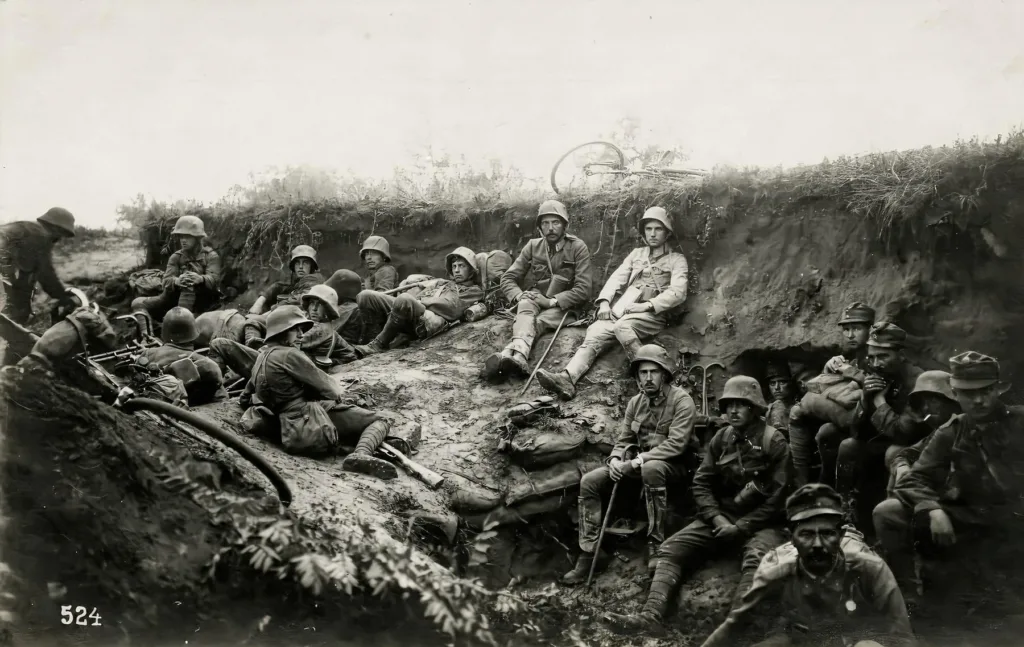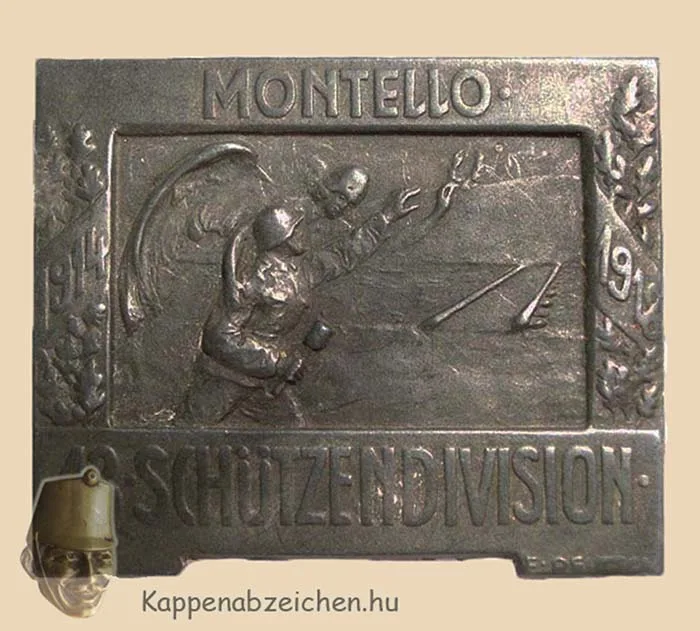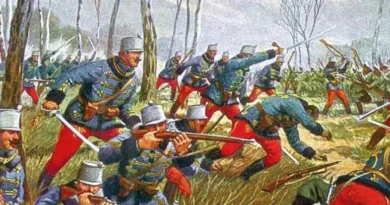June 1918
The most important event for the Monarchy this month was the long-planned last major offensive in Italy. The best divisions, tried troops attacked. However, contemporary data and subsequent analyzes showed that the crews of the experienced battalions were practically starving and in a physically degraded state. Their performance was not the same as even half a year earlier. It is also customary to mention as a reason for the failure of this offensive that the war plan was not adequate due to the internal disputes of the military leadership. Forces capable of striking only on paper were deployed in a scattered manner, neglecting the necessary concentration of forces.
The offensive that began on June 15 achieved some results in the middle reaches of the Piave. The strategic point on the west side of the river, large part of the Montello hill, fell into the possession of the four divisions attacking there. Desperate attacks to the north and to the south at the foot of the mountain did not lead to success. The regiments of the 17th division, the heroes of the Karst, fought street battles in the settlement of Nervesa, but they could not completely dislodge the Italian defenders from there. The 31st and 13th divisions, on the other hand, successfully reached the ridge of Montello, where the 32nd division also arrived as reinforcements to continue the attack.

The crossings of the Piave in the lower reaches of the river were successful in some places, but the pontoon bridges helping the crossing were swept away by the flooding river and effectively destroyed by enemy artillery and air force. Elsewhere, it was therefore not possible to create a permanent bridgehead. In the north, in Tyrol, the attack stalled on the first day. The attackers suffered huge losses in the valleys between the mountains in the effective fire of the Italians and the British. Attacks launched against artillery emplacements, e.g. on Mt Grappa were also unsuccessful.
Many people explained the effective functioning of the artillery countermeasures, which covered the attack directions well, with betrayal and the leaking of the attack plans. I don’t believe this was the case. In mountainous terrain, attack directions can be easily calculated. And the material superiority of the Entente, which was also reflected in artillery equipment, made it possible to close all potential attack directions. There was less opportunity for this along the Piave, since there the Monarchy essentially tried to cross the sections of all the attacking divisions, which they succeeded in doing. In this part, the bridges were subsequently attacked and destroyed by the defenders where they were found. The military history documents also emphasize the sudden flooding of the Piave, which also made the crossing very difficult.

The attack on the 15th June therefore led to significant result only at Montello. But the bridgehead created here could not be widened either, so a few days later the Monarchy command ordered the troops that crossed here back to their starting positions. The opening picture was probably taken during the first days of the offensive and shows the river crossing. The second attached photo, on the other hand, depicts troops already demoralized by the retreat in the cover behind the Piave embankment. The map shows the middle section of the Piave at the time of the attack. You can see the breakthrough achieved in Montello, and to the south the settlement of Nervesa, where the 17th Division fought.

The badge attached to the post is a nice badge of the 13th Rifle Division. The patron saint of these troops leads the charging private to the bridge at the crossing point and then up to Montello. The Austrian regiments of the division, the 1st, 14th, 24th and 25th rifle regiments, were selected troops, but their results did not change the fate of the operation.




